Introduction
Myanmar, formerly known as Burma, is the Land of Human Origin. It is also recognised by the world as the Golden Land.
Myanmar possesses a vast eco-diversity such as a variety of natural beauties, rich cultural heritage and historical artifacts such as dazzling waterfalls, graceful lakes, enchanting caves, sparkling beaches, and the unique cultures of different ethnic groups. The capital city of Myanmar is Yangon. It is the evergreen city with lush tropical trees, shady parks and beautiful lakes. The city has earned the name of "The Garden City of the East". Though with the atmosphere of a typical Asian city, it stands out in contrast as it is not yet overwhelmed with the global trends of modernity and it is making its own progress at its own pace, in its own calm, civic culture. Being the main entrance to the country and principle seaport, it is the hub of business activities and government offices as well as non-governmental organisations.
The world richest and most impressive Buddhist monument, the Shwedagon, more than 5,000 ancient Temples and stupas in 10th century archaeological Bagan, finest wooden architectures in Mandalay and unique lifestyle amidst Shan plateau, the famous floating gardens and leg-rowing fisherman at the splendid Inle lake, unspoiled white beaches or snow-capped mountains of the Himalayas in the extreme north are just to mention a few.
Key Facts
Myanmar
Location
South-East Asia.
Time
GMT + 6.5.
Area
676,552 sq km (261,218 sq miles).
Population
47.4 million (CIA estimate 2007).
Population Density
70.1 per sq km.
Capital
Yangon (Rangoon). Population: 4.1 million (UN estimate 2005). Administrative capital: Nay Pyi Taw. Note: The authorities plan to move the seat of government to Pyinmana.
Geography
Myanmar is a diamond-shaped country extending 925km (575 miles) from east to west and 2,100km (1,300 miles) from north to south. It is bounded by China, Laos and Thailand in the east, by Bangladesh and India in the north and by the Indian Ocean in the west and south. The Irrawaddy River runs through the centre of the country and fans out to form a delta on the south coast; Yangon stands beside one of its many mouths.
North of the delta lies the Irrawaddy basin and central Myanmar, which is protected by a horseshoe of mountains rising to over 3,000m (10,000ft), creating profound climatic effects. To the west are the Arakan, Chin and Naga mountains and the Patkai Hills; the Kachin Hills are to the north; to the east lies the Shan Plateau, which extends to the Tenasserim coastal ranges. Intensive irrigated farming is practised throughout central Myanmar, and fruit, vegetables and citrus crops thrive on the Shan Plateau, but much of the land and mountains are covered by subtropical forest.
Government
Socialist Republic since 1974. Power assumed by the army in 1988.
Head of State
Senior General Than Shwe since 1992.
Head of Government
Prime Minister Soe Win since 2004.
Language
The official language is Myanmar (Burmese). There are over 100 dialects spoken in Myanmar. English is spoken in business circles.
Religion
89% Theravada Buddhist. The remainder are Hindu, Muslim, Christian and animist.
Electricity
220-230 volts AC, 50Hz.
Social Conventions
Handshaking is the normal form of greeting. Full names are used, preceded by U (pronounced oo) in the case of an older or well-respected man’s name, Aung for younger men and Ko for adult males; a woman’s name is preceded by Daw. Courtesy and respect for tradition and religion is expected; for instance, shoes and socks must be removed before entering any religious building and it is customary to remove shoes before entering a traditional home (in most modern residences this is no longer observed except in bedrooms). When sitting, avoid displaying the soles of the feet, as this is considered offensive. Small presents are acceptable and appreciated, although never expected. Shorts and mini-skirts should not be worn. Penalties for drug-trafficking range from five years' imprisonment to a death sentence. Homosexuality is illegal.
Money Myanmar
Currency
Kyat (MMK; symbol K) = 100 pyas. Notes are in denominations of K1,000, 500, 200, 100, 50, 20, 10, 5 and 1. Kyat is pronounced like the English word ‘chat’. To combat the black market and limit the financial power of dissident groups, currency denominations are occasionally declared invalid without prior notice. Limited refunds are usually allowed for certain sectors of the population.
Note: The import and export of local currency is prohibited.
Currency Exchange
FECs are Myanmar’s second legal currency and are issued by the Bank of Myanmar specifically for visiting tourists. They come in denominations equivalent to US$20, 10, 5 and 1. Payment for FECs is only accepted in US Dollars. One US Dollar equals one FEC. FECs can be exchanged into Kyats at officially authorised banks, bureaux de change, hotels and Myanmar Travel and Tour offices and can be spent anywhere in the country. Cash payments can also be made in US Dollars, but only at establishments (eg hotels, railway stations, airlines) that have an official licence allowing them to accept dollars. Wherever possible, it is advisable to change US Dollars into Kyats rather than FECs, as FECs usually have a poorer exchange rate than Kyats. It is also recommended to carry small change as large notes may be difficult to change. Euros are now also accepted in banks, but exchange can be time consuming. Be aware that concerns over counterfeit money mean that some US Dollar bills with serial numbers beginning with AB or BC may not be accepted.
Credit/Debit Cards and ATMs
It is unlikely that credit or debit cards will be accepted; it is best to check with your card company prior to travel. There are no ATMs.
Traveller's Cheques
Not currently accepted, although this may change. Check with your tour agency prior to travel, and bring plenty of US Dollars in cash.
Currency Restrictions
Restrictions apply.
Banking Hours
Mon-Fri 1000-1400.
Exchange Rate Indicators
Date Jan 09
£1.00 = K9.49
$1.00 = K6.43
€1.00= K8.62
Public Holidays Myanmar
Below are listed Public Holidays for the January 2009-December 2010 period.
2009
4 Jan Independence Day.
12 Feb Union Day.
2 Mar Peasants' Day.
10 Mar Full Moon of Tabaung.
27 Mar Armed Forces Day.
12-16 Apr Maha Thingyan (Water Festival).
17-21 Apr Myanmar New Year.
1 May May Day.
8 May Full Moon of Kasone.
6 Jul Full Moon of Waso (Beginning of Buddhist Lent).
19 Jul Martyr's Day.
3 Oct Full Moon of Thadingyut (End of Buddhist Lent).
1 Nov Tazaungmon Full Moon Day.
11 Nov National Day.
25 Dec Christmas Day.
2010
4 Jan Independence Day.
12 Feb Union Day.
2 Mar Peasants' Day.
27 Mar Armed Forces Day.
Mar* Full Moon of Tabaung.
Apr* Maha Thingyan (Water Festival).
Apr* Myanmar New Year.
Apr* Full Moon of Kasone.
1 May May Day.
19 Jul Martyr's Day.
Jul* Full Moon of Waso (Beginning of Buddhist Lent).
Oct* Full Moon of Thadingyut (End of Buddhist Lent).
Nov* Tazaungmon Full Moon Day.
Nov* National Day.
25 Dec Christmas Day.
* Dates to be confirmed.
Note
Buddhist holidays are determined according to lunar sightings, and dates given here are approximations only. Other festivals celebrated by minorities include the Islamic observance of Bakri Idd in late November; Christmas and Easter; and the Karen New Year in early January. For further information, contact the embassy (see Contact Addresses).
Top Things To Do
Myanmar
• Catch one of the country's frequent Buddhist festivals, many timed to coincide with the full moon. Highlights include: Amanda Pagoda Festival in January/February; Pindaya Cave Festival in March; Maha Thingyan (New Year) in March; or Thihoshin Pagoda Festival, Pakkoku in June/July.
• Join the crowd at some traditional sport events. The national game is Chinglone; played in teams of six, the object of the game is to keep a cane ball in the air for as long as possible using any part of the body except the hands. Burmese boxing is another popular sport.
• Participate in a Buddhist retreat. There are several centres for the serious study and practice of Theravada Buddhism, the most famous of which is the Mahasi Meditation Centre in Yangon. Long-stay entry visas may be needed for a retreat.
• Attend performances of Myanmar's traditional popular theatre, known as pwe (show). Performances take place in religious festivals, weddings, sporting events or even funerals, and sometimes last for an entire night.
• See traditional dance forms (nat pwes), which pay homage to the spirit world, and catch some marionette theatre (yok-thei pwe), widely practised during the late 18th century in Mandalay.
• Explore Myanmar's rich opportunities for ecotourism, trekking and safaris. The best parks include the Alaungdaw Kathapa National Park (northwest of Monywa); Hlawga National Park (near Yangon); Popa Mountain Park (central Myanmar); Lampi Island (Myeik Archipelago); and Shwesettaw Wildlife Sanctuary (located in Minbu).
• Enjoy watersports on Myanmar's lovely beaches. Popular spots include: Kanthaya Beach (Rakhine coast); Maung-ma-gan Beach (Taninthayi coast in the south); Ngapali Beach (Rakhine coast); and Chaung-tha Beach (west of Pathein).
Top Things To See
Myanmar
• Explore Yangon (Rangoon), a city of temples, markets, food stalls and ill-repaired colonial architecture. Highlights include the golden Shwedagon Pagoda, one of the most spectacular Buddhist shrines in Asia; the ancient Sule Pagoda; the Botataung Pagoda, hollow inside with a mirrored maze; and the Maha Pasan Guha, or ‘Great Cave'.
• Outside the capital, visit the Naga-Yone enclosure near Myinkaba, with a Buddha figure entwined and protected by a huge cobra - a combination of Buddhism and Brahman astrology.
• Marvel at Kyaiktiyo and its incredible ‘Golden Rock Pagoda', a 5.5m (18ft) shrine built on a gold-plated boulder balancing atop a cliff.
• Visit Pegu with its golden Shwemawdaw Pagoda and market. Just northeast is the Shwethalyaung Buddha, revered as one of the most beautiful and lifelike of reclining Buddhas, which was lost and totally overgrown by jungle in 1757 then rediscovered in the British era.
• Discover historical Bagan. More than 13,000 pagodas once spread over this dry plain, though now there are a mere 3,000. Bagan village has a museum, market, temple and lacquerware workshops. Open temples include Shwegugyi Temple; Gawdawpalin Temple; and Thatbyinnyu Temple, the highest in Bagan.
• Roam the old royal city of Mandalay, which is rich in palaces, stupas, temples and pagodas. Sights include the huge Shweyattaw Buddha, with its outstretched finger; the Eindawya Pagoda, covered in gold leaf; the Shwekyimyint Pagoda; the Mahumuni Pagoda or ‘Great Pagoda', housing a famous and revered Mahumuni image.
• Also in Mandalay, visit the ruins of the once-stupendous Mandalay Palace, destroyed in 1942. Remains of the Shwenandaw Kyaung Monastery can be seen to the south of the Kuthodaw Pagoda, called ‘the world's biggest book' because of its 729 marble slabs that are inscribed with the entire Buddhist canon.
• Venture outside Mandalay to several abandoned capital cities. Sagaing contains interesting pagodas, and Ava's old city walls can be traced. Take a river trip to Mingun to see the famous Mingun Bell, supposedly the world's largest uncracked hung bell. The city of Amarapura is also famous for its cotton and silk weaving.
• Get off the beaten track in the country's east and northwest. Kalaw provides a cool, pine-forested escape. The caves and lake at Pindaya contain thousands of Buddha images. Near Yengan village are the Padah-Lin Caves, containing prehistoric paintings. Meanwhile Inlay Lake is famous for its floating gardens and leg-rowing fishermen. Maymyo is a charming British hill station further north.
Climate
Myanmar
Click here for more imagesA monsoon climate with three main seasons. The hottest period is between February and May, with little or no rain. Rainy season exists from May to October and dry, cooler weather from October to February.
Required Clothing
Lightweight cottons and linens throughout most of the year are required. A light raincoat or umbrella is needed during the rainy season. Warmer clothes are advised for coolest period and some evenings.
Getting There
Myanmar
Getting There by Air
The national airline is Myanmar Airways International (UB) (website: www.maiair.com).
Main Airports
Yangon (RGN) is 19km (12 miles) from the city. To/from the airport: Buses go to the city (journey time – 30 minutes). Taxis are also available (journey time – 45 minutes). Facilities: Restaurant, bar, snack bar, bank, post office, duty-free shop and tourist information.
Departure Tax
US$10. Passengers in direct transit are exempt.
Getting There by Water
Cruise ships call at Yangon Port.
Getting There by Road
It is recommended to use only air travel as a means of access into Myanmar. Overland entry with a border pass is, in theory, permitted at the following border check points: Kyukoke, Namkhan and Muse on the Myanmar-Yunnan (People’s Republic of China) border; and Tachileik, Myawaddy and Kawthaung on the Mynamar-Thailand border. Generally speaking, however, foreigners are only allowed to travel as part of an organised group. Owing to continuing political instability, borders may periodically close. Contact the nearest embassy for up-to-date details.
Map
Myanmar
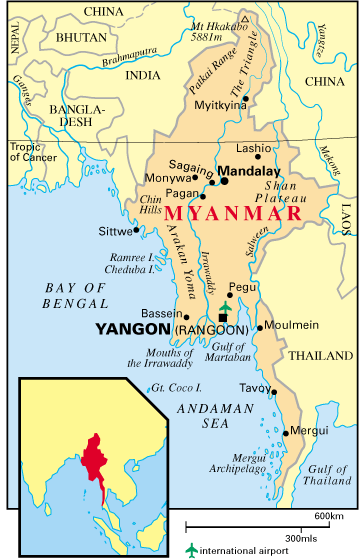
|
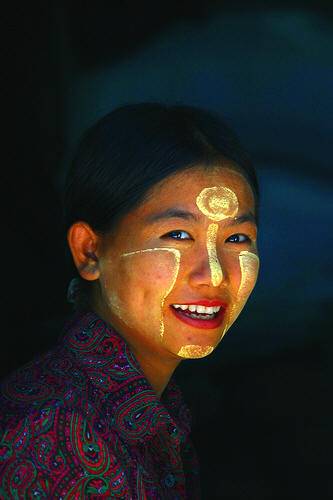
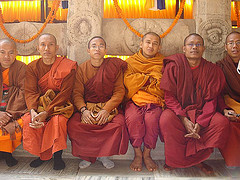
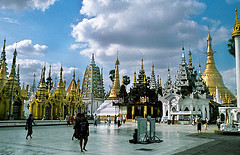
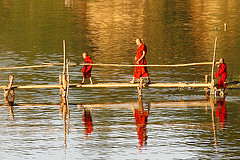
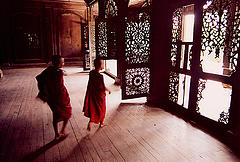
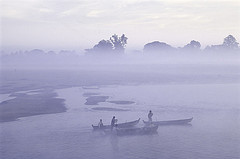
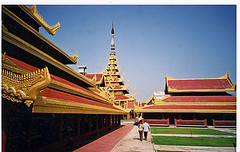
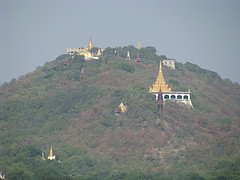
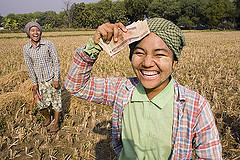
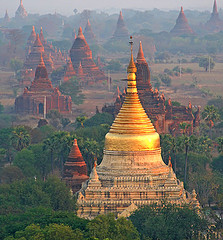
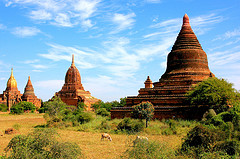
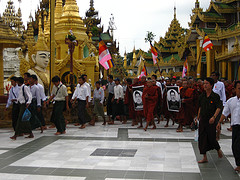
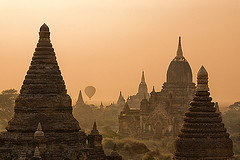
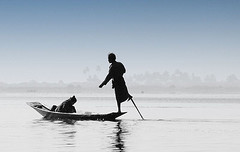
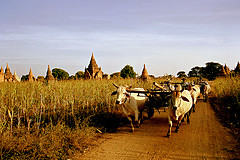
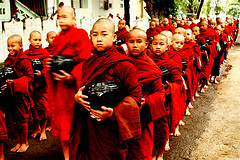
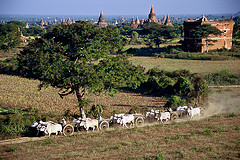
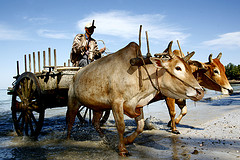
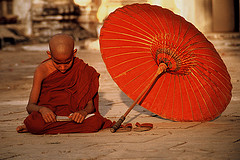
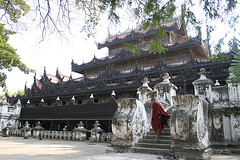
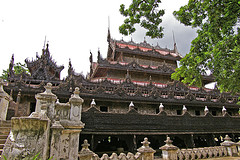
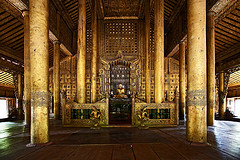
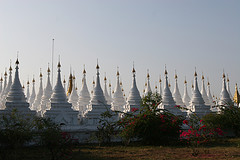
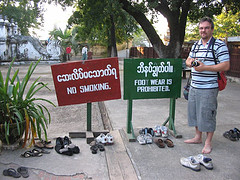
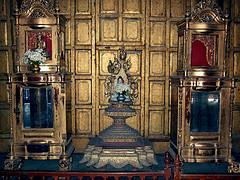
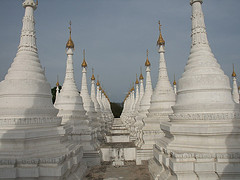
|


